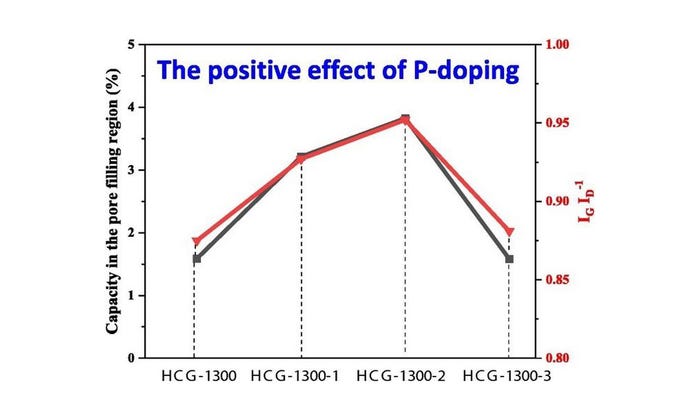Coffee Jolt: Coffee Grounds Power High-Performance Sodium-Ion Battery Anodes
Research team brews a successful synthesis of P-doped hard carbon using coffee grounds as a precursor.

Battery Technology has covered numerous projects that use renewable sources found in nature as building blocks of promising battery chemistries. Followers of these projects will surely be buzzing about the latest example. Read on before you conclude its full of beans:
In a study recently published in the KeAi journal Carbon Resources Conversion, a team of researchers from Kazakhstan and South Korea reported the successful synthesis of P-doped hard carbon using coffee grounds as a precursor and H3PO4 as the doping agent. The investigation focused on determining the optimal doping level for maximizing the incorporation of phosphorus ions into the carbon framework, aiming to enhance the electrochemical performance of the material as an anode for sodium-ion batteries (SIBs).
Renewable resource use is invigorating
One notable aspect of the study is the use of coffee waste as a precursor material for hard carbon synthesis. The choice of coffee grounds is not only environmentally conscious, given the large annual disposal of approximately 18 million metric tonnes, but also leverages the unique lignocellulosic structure of coffee waste. This result addresses the challenges posed by the uneven distribution and scarcity of lithium resources, offering an alternative solution through the exploration of SIBs.

CAPACITY IN THE PORE FILLING REGION AND ID ID ⁻¹ Credit: Kalibek, M., et al.; CC BY-NC-ND
The researchers further varied the concentrations of H3PO4, and found that using 2M of the doping agent led to promising electrochemical performance for hard carbon as an anode material. The resulting P-doped hard carbon, carbonized at 1300 °C, exhibited a reversible capacity of 341 mAh g-1 at a current density of 20 mA g-1, with an initial Coulombic efficiency of 83%. These results underscore the potential of P-doped hard carbon in enhancing the energy storage capabilities of sodium-ion batteries.
Overall, the study offers valuable insights into the synthesis and optimization of P-doped hard carbon for sodium-ion batteries, emphasizing the importance of precursor materials, doping agents and carbonization conditions. The findings have implications for the development of more efficient and sustainable energy storage solutions, particularly in the context of sodium-ion batteries.
About the Author(s)
You May Also Like





